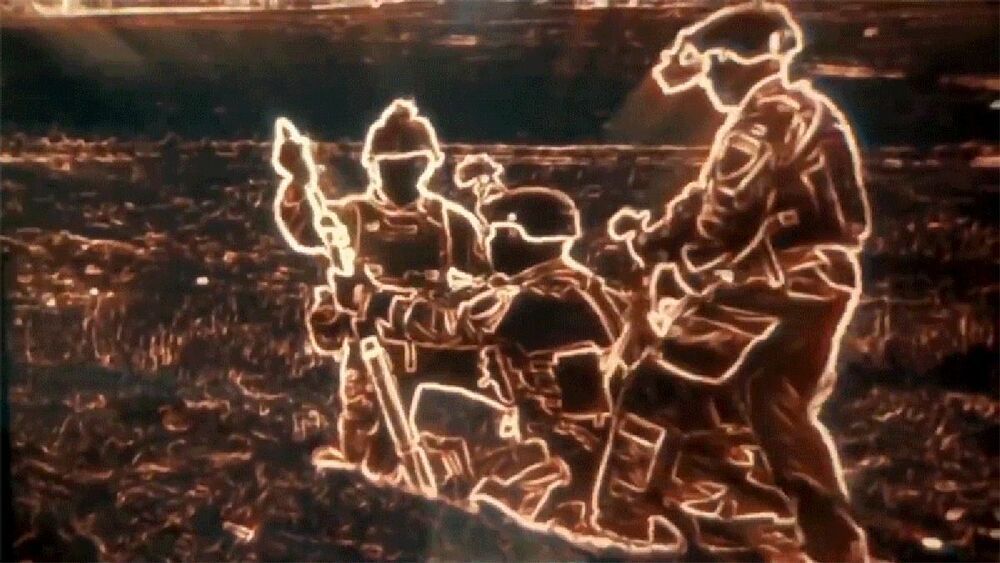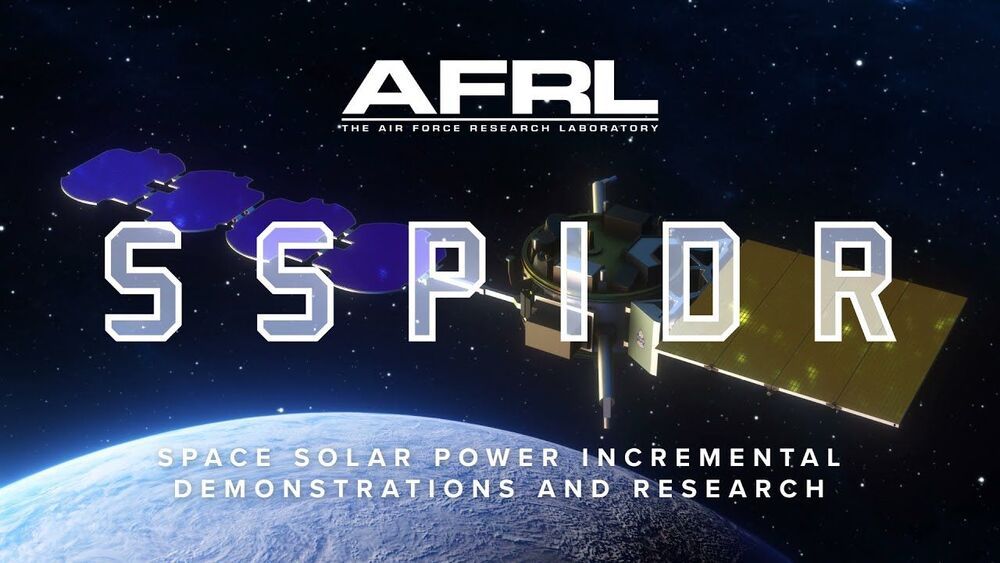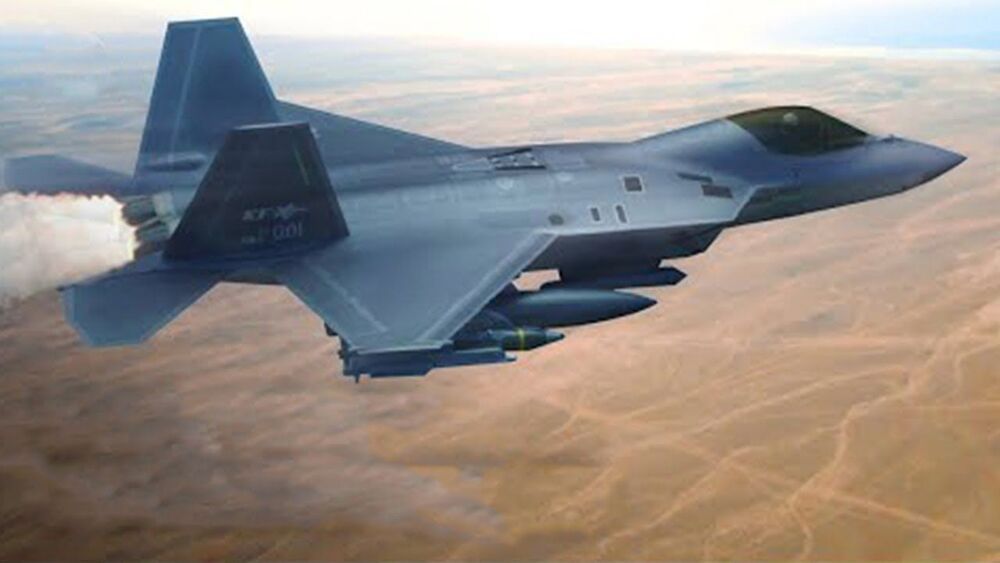When you think of night-vision goggles, you probably imagine the pitch black of night being illuminated in a sea of green that helps improve visibility. That’s ancient technology now as the US Army’s Lancer Brigade of Joint Base Lewis–McChord demonstrates what soldiers see through the military’s latest and greatest night vision goggles. The Predator would be jealous.
Category: military
The head scientist of the US Space Force has an unusual idea for how to maintain military dominance: augmenting and upgrading human soldiers.
Speaking at an Air Force Research Laboratory event, Space Force chief scientist Joel Mozer suggested that we’re entering an era during which soldiers can become a “superhuman workforce,” according to Metro, thanks to new tech including augmented and virtual reality, sophisticated AI, and nerve stimulation.
“In the last century, Western civilization transformed from an industrial-based society to an information-based society,” Mozer said, “but today we’re on the brink of a new age: the age of human augmentation.”
Intercepting record numbers of Russian aircraft off of North America’s west coast has stretched Air Force units thin, a top service official in Alaska said Wednesday.
“We have certainly seen an increase in Russian activity. We intercepted over 60 aircraft last year. … We monitor more than that,” Lt. Gen. David Krumm said from Joint Base Elmendorf-Richardson, Alaska, during an online forum hosted by the Air Force Association.
That’s the most action the Alaska Air Defense Identification Zone — a region spanning 200 nautical miles that reaches past U.S. territory and into international airspace — has seen since the Soviet Union fell in 1991. In comparison, the Anchorage Daily News reported in 2015 that the ADIZ averaged about 10 incursions by Russian aircraft each year, like Tu-95 Bear bombers, anti-submarine aircraft, and intelligence-collection planes.
Deepfakes from above.
Deepfakes are usually associated with imagery of AI-generated people, but what about fake satellite imagery? Geographers say such deepfakes could be used to spread misinformation and even mislead the military.
‘Our customers are hardcore’: Vollebak is aiming to be the Tesla of fashion, creating clothes fit for the toughest places on Earth and in space
Posted in military, space | Leave a Comment on ‘Our customers are hardcore’: Vollebak is aiming to be the Tesla of fashion, creating clothes fit for the toughest places on Earth and in space
It’s clothing fit for a post-apocalyptic world, not our own. It’s unsurprising then that the company has found a large following in Silicon Valley, which is known for attracting vast resources and the kinds of people absorbed in questions of where we’re all headed. Many have, after all, bought up the boltholes and bunkers to prove it.
A Vollebak rack would sooner belong in a military surplus warehouse than a high street clothing store.
To enable the efficient operation of unmanned aerial vehicles (UAVs) in instances where a global localization system (GPS) or an external positioning device (e.g., a laser reflector) is unavailable, researchers must develop techniques that automatically estimate a robot’s pose. If the environment in which a drone operates does not change very often and one is able to build a 3D map of this environment, map-based robot localization techniques can be fairly effective.
Ideally, map-based pose estimation approaches should be efficient, robust and reliable, as they should rapidly send a robot the information it needs to plan its future actions and movements. 3D light detection and ranging (LIDAR) systems are particularly promising map-based localization systems, as they gather a rich pool of 3D information, which drones can then use for localization.
Researchers at Universidad Pablo de Olavide in Spain have recently developed a new framework for map-based localization called direct LIDAR localization (DLL). This approach, presented in a paper pre-published on arXiv, could overcome some of the limitations of other LIDAR localization techniques introduced in the past.
A power-beaming experiment is scheduled to launch in 2024.
Space-based solar power won’t be just a sci-fi dream forever, if things go according to the U.S. Air Force’s plans.
You know, when you have North Korea at your side, it is better to always stay on the alert. And when your country’s coastline is washed by the Sea of Japan and the East China Sea, double attention is required. You guessed it right, we’re talking about the Republic of South Korea and its Air Force (ROKAF).
Today there are two American air bases on the territory of South Korea — Osan and Kusan, which are covered by the Patriot air defense system.
The total number of ROKAF and US Air Force fighters at all South Korean air bases is about 500 combat aircraft. Most of them are the 4th generation fighters that are about to become obsolete.
But if the airspace of your country is violated by China and Russia 10–15 times a year, you can’t rely solely on your allies. The only condition for relative peace is modern fighters.
#Korea #testing #new #jetfighter.
For copyright matters please contact us at:
[email protected]
Circa 2013
Fusion-based nuclear propulsion has the potential to enable fast interplanetary transportation. Due to the great distances between the planets of our solar system and the harmful radiation environment of interplanetary space, high specific impulse (Isp) propulsion in vehicles with high payload mass fractions must be developed to provide practical and safe vehicles for human space flight missions.
The Z-Pinch dense plasma focus method is a Magneto-Inertial Fusion (MIF) approach that may potentially lead to a small, low cost fusion reactor/engine assembly [1]. Recent advancements in experimental and theoretical understanding of this concept suggest favorable scaling of fusion power output yield [2]. The magnetic field resulting from the large current compresses the plasma to fusion conditions, and this process can be pulsed over short timescales (10−6 s). This type of plasma formation is widely used in the field of Nuclear Weapons Effects testing in the defense industry, as well as in fusion energy research. A Z-Pinch propulsion concept was designed for a vehicle based on a previous fusion vehicle study called “Human Outer Planet Exploration” (HOPE), which used Magnetized Target Fusion (MTF) [3] propulsion.
Multi-resistant pathogens are a serious and increasing problem in today’s medicine. Where antibiotics are ineffective, these bacteria can cause life-threatening infections. Researchers at Empa and ETH Zurich are currently developing nanoparticles that can be used to detect and kill multi-resistant pathogens that hide inside our body cells. The team published the study in the current issue of the journal Nanoscale (“Inorganic nanohybrids combat antibiotic-resistant bacteria hiding within human macrophages”).
Antibiotic-resistant bacteria are being swallowed by a human white blood cell. Colorized, scanning electron microscopic (SEM) image. (Image: CDC/NIAID)
In the arms race “mankind against bacteria”, bacteria are currently ahead of us. Our former miracle weapons, antibiotics, are failing more and more frequently when germs use tricky maneuvers to protect themselves from the effects of these drugs. Some species even retreat into the inside of human cells, where they remain “invisible” to the immune system. These particularly dreaded pathogens include multi-resistant staphylococci (MRSA), which can cause life-threatening diseases such as sepsis or pneumonia.









